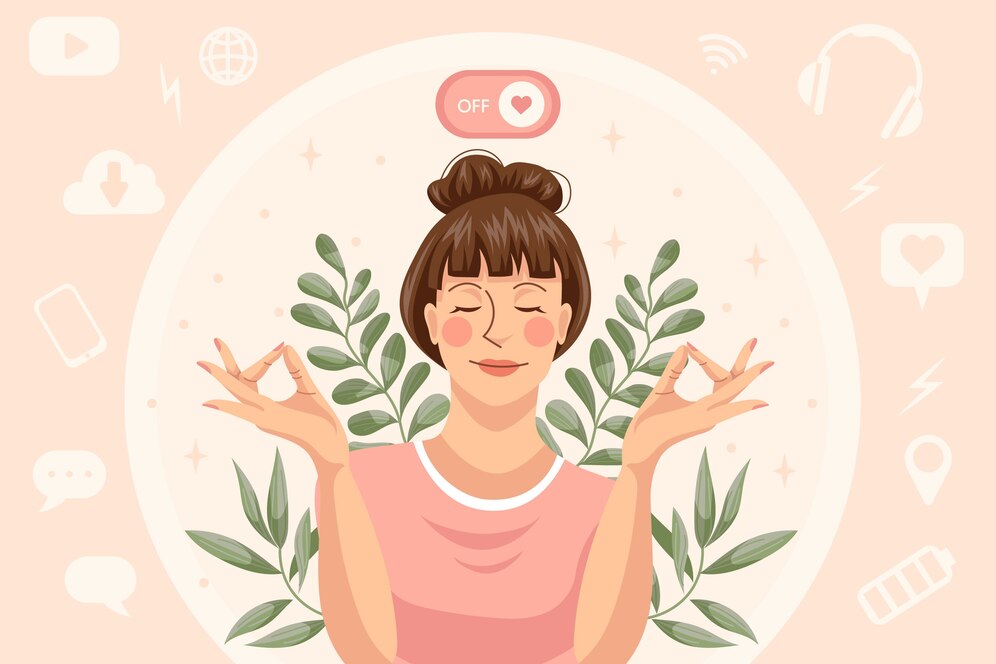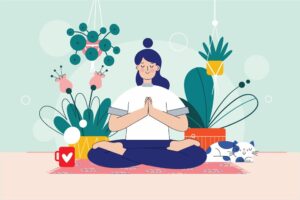- The Burnout Epidemic and the Rise of Resistance
- 1. The Toxic Productivity Trap: Why Hustle Culture Fails Us
- 2. Therapeutic Laziness 101: Redefining Rest as Resistance
- 3. Corporate Self-Care: Workplace Flexibility and Mental Health Days
- 4. Nature Retreats and Slow Living: Reconnecting with the Earth
- 5. Your 5-Day Guide to Therapeutic Laziness
- The Future of Rest Is Radical
The Burnout Epidemic and the Rise of Resistance
How Slow Living, Mindful Productivity, and Anti-Hustle Culture Are Redefining Success
In a world where “busy” is a badge of honor, burnout has become a silent pandemic. Nearly 70% of Gen Z workers report prioritizing mental health over career advancement, and 53% of women globally feel more burned out today than five years ago. The pressure to hustle—to grind through 80-hour workweeks, monetize every hobby, and optimize every minute—has left millions exhausted, disillusioned, and yearning for change.
Enter therapeutic laziness, a self-care revolution reframing rest as a radical act of resistance. Coined by trend forecasters WGSN for 2025, this movement encourages guilt-free downtime, intentional pauses, and reclaiming joy in simply being. But how do we embrace laziness in a culture that equates productivity with worth? This article explores how therapeutic laziness, workplace flexibility, and nature-centric slow living are dismantling toxic productivity—and offers actionable steps to thrive in a burnout world.
1. The Toxic Productivity Trap: Why Hustle Culture Fails Us
The Myth of “More”
Hustle culture glorifies overwork as a virtue, but its consequences are dire. Chronic stress elevates cortisol levels, disrupts sleep, and weakens immune function. Worse, it perpetuates a cycle where self-worth hinges on output, leaving individuals trapped in a race they can’t win.
The Rise of Anti-Hustle Narratives
Gen Z is leading the charge against grind mentality. Trends like “quiet quitting,” “lazy girl jobs,” and therapeutic laziness reject the idea that burnout is inevitable. As TikTok creator Gabrielle Judge explains, these movements prioritize “work-life integration” over sacrificing well-being for corporate loyalty.
Key Takeaway: Productivity isn’t the enemy—toxic productivity is. Therapeutic laziness isn’t about apathy; it’s about sustainable effort.
2. Therapeutic Laziness 101: Redefining Rest as Resistance
What Is Therapeutic Laziness?
Therapeutic laziness is intentional, guilt-free rest designed to reset the nervous system. Unlike traditional self-care (think: hour-long yoga sessions), it celebrates simplicity: lying in bed, daydreaming, or enjoying screen-free Sundays.
Science-Backed Benefits
- Reduced Burnout: Rest lowers cortisol and restores energy.
- Enhanced Creativity: Downtime allows the brain to process ideas subconsciously, sparking “eureka” moments.
- Improved Sleep: Pre-bed rituals like skincare or soft music improve sleep quality.
A Personal Story: From Burnout to Boundaries
Sarah, a former marketing executive, quit her high-pressure job after developing chronic migraines. She now runs a freelance consultancy with strict “off-hours” and incorporates daily “lazy hours” for reading and walks. “Therapeutic laziness taught me that rest isn’t selfish—it’s survival,” she says.
3. Corporate Self-Care: Workplace Flexibility and Mental Health Days
The Shift Toward Human-Centric Work
Companies are finally listening. Remote work, four-day weeks, and “mental health days” are no longer perks but necessities. For example, Kickstarter’s four-day workweek trial boosted productivity by 20%.
Strategies for Employers
- Flexible Schedules: Allow employees to design their hours around peak energy times.
- Sleep Tourism: Hotels now offer AI-powered beds and scent-infused lullabies for corporate retreats.
- Boundary Training: Workshops on saying “no” to after-hours emails protect personal time.
Case Study: The “Lazy Girl Job” Movement
Gabrielle Judge’s viral TikTok trend advocates for remote roles that prioritize balance over burnout. One follower, Mia, transitioned from a toxic PR job to a remote HR role: “I earn less, but I’m finally living“.

4. Nature Retreats and Slow Living: Reconnecting with the Earth
The Healing Power of “Soft Adventure”
WGSN’s 2025 trends highlight “soft adventure”—activities like forest bathing, birdwatching, or stargazing that require minimal gear but maximize mindfulness. These practices align with therapeutic laziness by merging rest with gentle movement.
Why Nature Works
- Digital Detox: Unplugging reduces anxiety and improves focus.
- Sensory Grounding: The smell of pine, the sound of waves—nature engages the senses, calming the nervous system.
A Journey to Alcohol-Free Mindfulness
James, a tech worker, swapped nightly wine for sunrise hikes. “Nature became my therapy. I’m more present, both at work and with my kids,” he shares.

5. Your 5-Day Guide to Therapeutic Laziness
Day 1: Micro-Breaks for Macro Calm
- 7:00 AM: Start with 10 minutes of stretching (no phones!).
- 12:30 PM: Lunch away from your desk. Try a “forest bathing” walk.
- 3:00 PM: Power nap (20 minutes max) to reset focus.
Day 2: Digital Detox Deep Dive
- Delete social media apps for 24 hours. Replace scrolling with sketching or knitting.
Day 3: Creative Hobbies Hour
- Dedicate 60 minutes to painting, journaling, or baking. No multitasking allowed.
Day 4: Boundary Building
- Set “no work” hours and communicate them to your team. Use this time for a hobby.
Day 5: Nature Immersion
- Spend the afternoon in a park or garden. Practice mindful observation: note 5 things you see, hear, and feel.
The Future of Rest Is Radical
Therapeutic laziness isn’t a trend—it’s a paradigm shift. By embracing slow living, demanding workplace flexibility, and redefining productivity, we can dismantle burnout culture. As WGSN predicts, beds will become “wellness sanctuaries,” and rest will be a non-negotiable right. The question isn’t whether you deserve laziness; it’s whether you’re brave enough to claim it.
Start small. Block one “lazy hour” today. Your well-being is worth the rebellion.


